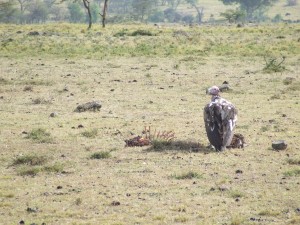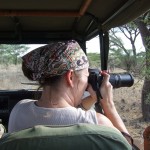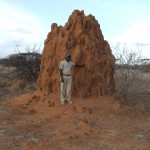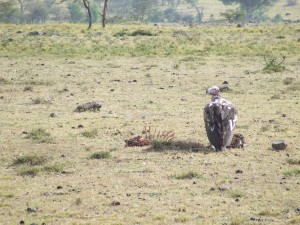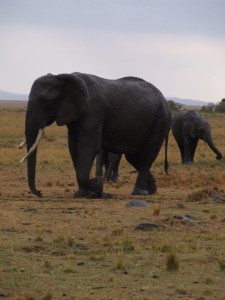So far, we have only seen a tiny fraction of the exotic wildlife that roams freely here. I have dozens and dozens more photos but you get the idea.
Kenya is home to more than 80 major animal species. You can see many of these in their natural habitats in different regions of the country: the big cats – lion, leopard, cheetah; grazers – gazelle, impala, antelope, zebra; primates – colobus, vervet and golden monkeys and baboons; and of course, scavengers – jackals, hyenas and vultures to complete the food chain. The list goes on and on.
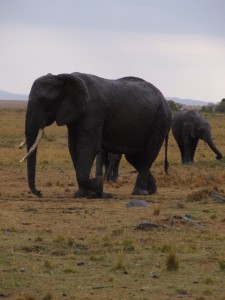 The Big Five – to review, lion, elephant, rhino, buffalo and leopard – were the most desired trophies amongst the old hunting clubs. Hunting is no longer permitted in the national parks and game reserves. Endangered species such as the Black Rhino have been making a comeback due to conservation efforts.
The Big Five – to review, lion, elephant, rhino, buffalo and leopard – were the most desired trophies amongst the old hunting clubs. Hunting is no longer permitted in the national parks and game reserves. Endangered species such as the Black Rhino have been making a comeback due to conservation efforts.
Now we can only shoot them with a camera and it is a photographer’s dream location.
Birdwatchers have the opportunity to see some of the 1,000+ recorded bird species and 60% of all African birds here. It is not unheard of to spot up to 100 species in a single day. And Lake Nakuru is world-famous for its resident population of over 6 million flamingos.
I asked Newton to get out and stand next to this massive termite mound for a size comparison.
He hesitated for a moment. He looks a little nervous, doesn’t he?
After he got back in the vehicle, he told us the snakes like to lurk around the base and sometimes curl up in the holes. I would NEVER have asked him to get so close if I had known beforehand.
It was definitely above and beyond his job description.
It’s been an exciting day but I’m looking forward to returning to the creature comforts of our luxury camp – a long hot shower followed by sunset cocktails and a multi-course dinner.

